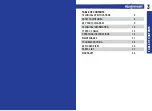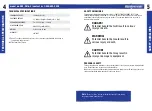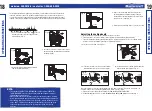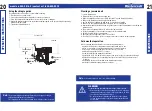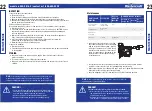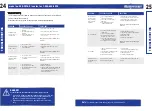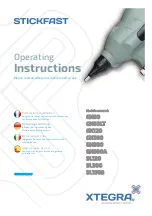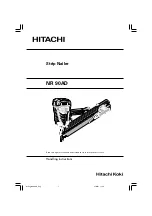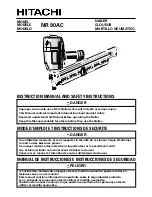
Note:
Solvent sprayed on the nose to clean and free up the push lever
may have the opposite effect.The solvent may soften the tar on the
shingles and cause tar buildup to be accelerated. Dry operation is better.
CAUTION!
INSPECTION
1. Inspect the push lever and feeders.
●
Disconnect air hose
.
●
Clean the knob sliding part and lubricate it with pnenumatic tool lubricant.
●
Open the nail guide and remove dust. Lubricate the nose opening and feeder shaft.
●
Lubricate the feeding surface of the nose and the nail guide after cleaning. This promotes
smooth operation and prevents rust.
2. Clean and remove tar and dirt.
Tar and dirt may build up on the nose and push lever. This can prevent correct operation.
●
Disconnect air hose.
●
Clean and remove tar and dirt with kerosene, #2 fuel oil or diesel fuel. CAUTION! Excess
vapour from these products could be ignited by a spark produced during nailing and
cause an explosion.
●
Immerse only the area around the outlet in solvent. Do not immerse the magazine or
body. Plastic parts and O-ring may be damaged.
●
Dry off the nailer before use. Any oil film left after cleanup will accelerate tar
buildup and nailer will require more frequent cleaning.
●
Make sure the push lever operates properly.
3. Inspect the magazine.
●
Disconnect air hose.
●
Clean the magazine. Remove paper chips or wooden chips which may have accumulated
in the magazine.
STORING
●
When not in use for an extended period, apply a thin coat of lubricant to the steel
parts to avoid rust.
●
Do not store the nailer in a cold weather environment.
●
When not in use, the nailer should be stored in a warm and dry place. Keep out of reach
children.
Check that the main nail stopper and sub nail stopper slide
smoothly by pushing them with finger. If not smooth, nails can
be driven at an irregular angle and hurt someone.
Never use gasoline or other highly flammable liquids.
Never use nailer unless push lever is operating properly.
MAINTENANCE
23
22
model no. 058-9809-8 | contact us 1-800-689-9928
model no. 058-9816-0 | contact us 1-800-689-9928
Note:
When temperatures are below freezing, keep the tools warm
using any safe, convenient method.
DANGER!
Potential hazard that will result in serious injury or death.
None
X
X
X
See below
X
MAINTENANCE
REQUIRED
TOOLS OR
MATERIALS
REQUIRED
DESCRIPTION
Each Use or
Every 2 Hrs
MAXIMUM SERVICE INTERVAL
Monthly
As
Needed
General inspection-
free movement
In-depth inspection
Replace worn or
broken parts
Lubrication
Trigger, spring,
safety mechanism
Worn or broken
parts
Pneumatic tool
oil
Maintenance
Disconnect the tool from the air compressor before perform-
ing maintenance/service, adjusting, clearing jams, reloading,
and when it is not in use.
Repairs must be performed by a qualified service technician
only. Failure to comply will lead to serious injury or death.
MAINTENANCE
• Lubrication: If the air-powered coil roofing
nailer and the compressor are not equipped
with an in-line lubrication system, place up
to 6 drops of pneumatic tool oil into the air
inlet before each work day or after every 2
hours of continuous use, depending on the
characteristics of the workpiece and type
of fasteners used.
• Air-operated tools must be inspected periodically and worn or broken parts must be
replaced to ensure that the tools are operating safely and efficiently.
• Inspect and replace worn or damaged O-rings, seals, etc. Tighten all screws and caps
frequently in order to help prevent personal injury.
• Keep the magazine of the tool clean and free of any dirt or abrasive particles.
X


